When it comes to creating a lush, green lawn in Utah, choosing the right grass seed is key. While Kentucky Bluegrass is a great choice, there are other options to consider as well, depending on the characteristics you are after.
But before we dive into the best grass seed for Utah, it’s important to note that this state presents some unique challenges for lawn care enthusiasts.
Utah’s hot and dry climate can make it difficult for grass to thrive, especially during the scorching summer months. In addition, the high altitude, heavy soil, and extreme weather conditions can make it tough for even the hardiest grasses to grow.
But fear not, with the right grass selection and a proper lawn care plan, you can have a beautiful lawn that will make your neighbors green with envy. So, let’s explore the best grass seed options for Utah, and get your lawn on the road to success.
Kentucky Bluegrass
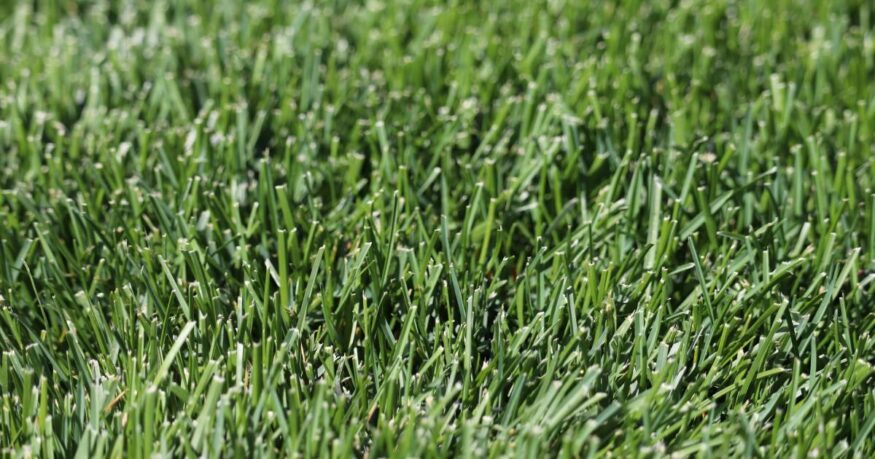
| Also Known As | Poa pratensis L. |
| Type of Grass | Cool season perennial |
| Optimal Zones | Northern cool season zone, transition zones |
| Root Structure | Shallow |
| Winter hardiness | Excellent |
| Shade tolerance | Poor to Good |
| Water Requirements | High |
| Drought Tolerance | Poor |
| Self Repair Capacity | Excellent |
| Overall Maintenance Requirements | High |
Why Kentucky Bluegrass is a Good Choice For Utah
Kentucky Bluegrass is a popular cool-season grass used in Utah landscapes. It is soft, durable, and holds up well to foot traffic, making it a great option for families with kids, pets, or sports fields. In addition, it looks green and healthy in spring and fall, adding a touch of natural beauty to any yard.
However, this type of grass is highly susceptible to various diseases and insect infestations. It’s also sensitive to drought stress and is easily damaged. High-traffic areas in particular will need extra fertilizer to stay healthy. Moreover, bluegrass struggles in Utah’s drought-heavy, hot summers, and needs proper care during this time of year.
Despite these challenges, Kentucky Bluegrass is a good choice for homeowners who want a beautiful and lush lawn. It requires plenty of water, but it’s designed to grow in just about any soil across the state of Utah. If you plan to lay sod in your yard, it will likely be a Kentucky Bluegrass mix because sod farms predominantly grow this type of sod.
Bluegrass-ryegrass blends are also a good option for sod, as they can help combat the susceptibility to disease and insect infestations. They also tend to have an average establishment rate and a medium, coarse texture.
In summary, Kentucky Bluegrass is the most common type of grass used in Utah due to its adaptability to a variety of soil types and ability to endure cooler weather better than other types of grass. Its deep, velvety green color and resistance to heavy foot traffic make it perfect for families with kids, dogs, or sports fields.
So, if you want to add natural beauty to your lawn, Kentucky Bluegrass is an excellent choice.
Perennial Ryegrass
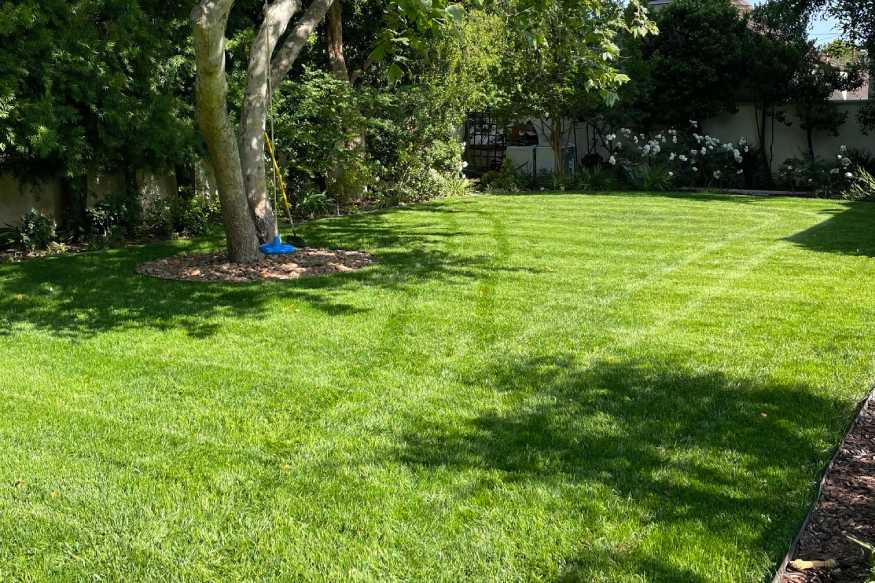
| Also Known As | Lolium perenne L. |
| Type of Grass | Cool season perennial |
| Optimal Zones | Mild northern zones |
| Root Structure | Deep |
| Winter hardiness | Good to excellent |
| Shade tolerance | Moderate |
| Water Requirements | High |
| Drought Tolerance | Good |
| Self Repair Capacity | Excellent wear tolerance |
| Overall Maintenance Requirements | Moderate to high |
Why Perennial Ryegrass Grows Well in Utah
Perennial ryegrass is a cool-season grass that is perfect for homeowners looking for an alternative to traditional lawn grasses. This type of grass is a great choice if you’re looking for a grass that is quick to establish and disease-resistant. It also blends in well with bluegrass, making it a great choice for those looking to over-seed their pre-existing bluegrass lawn.
Perennial ryegrass is more drought tolerant than bluegrass, making it ideal for those hot Utah summers. It’s also a great option for high-traffic lawns, like sports fields, as it has a thick, coarse texture and is bright green in color.
If you’re planning on using pre-cut sod, a bluegrass-ryegrass blend is your best bet for long-term results. On the other hand, if you need to over-seed your pre-existing bluegrass lawn, a ryegrass-bluegrass blend is the way to go.
Perennial ryegrass is a persistent, dark-green, fine to medium-textured turfgrass that is used for home lawns, parks, grounds, golf courses, and athletic fields. This species produces a bunch-type growth habit and does not form rhizomes or stolons. Its recuperative potential is not as strong as Kentucky bluegrass.
Perennial ryegrass germinates rapidly (5 to 7 days) and establishes quickly. It is very competitive with other turfgrasses and is used extensively for overseeding thin or damaged turf. Because of its aggressive nature, perennial ryegrass is generally not used in amounts over 20 percent in a mixture with other turfgrasses. It is suitable for use alone or in combination with Kentucky bluegrass and/or fine fescues.
Overall, perennial ryegrass is a great choice for homeowners looking for a durable, fast-growing, and disease-resistant grass that can handle Utah’s climate. It pairs well with bluegrass and is a great option for over-seeding or pre-cut sod. Just keep in mind that it does require a lot of water to maintain its lush appearance.
Fine Fescue
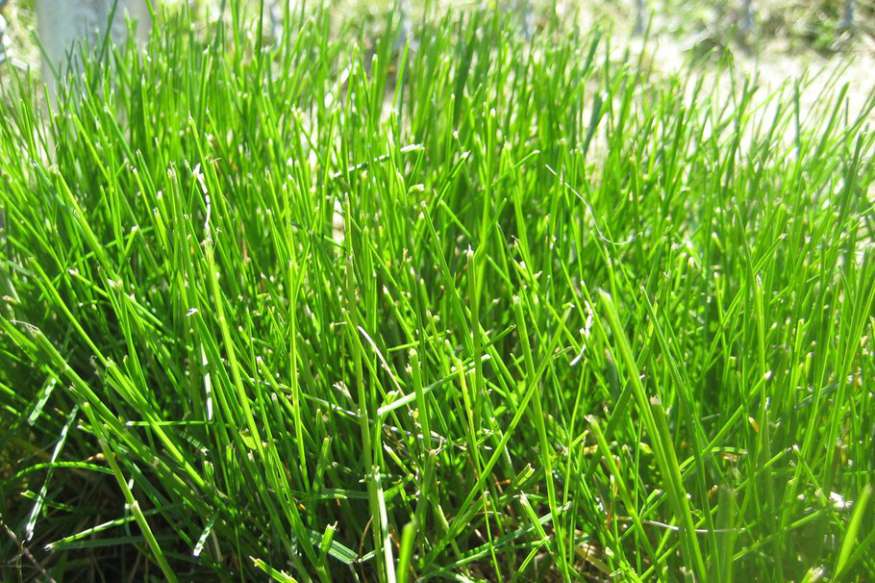
| Also Known As | Hard fescue, strong creeping red fescue, slender creeping red fescue, sheep fescue, chewings fescue; Festuca L. |
| Type of Grass | Cool season perennial |
| Optimal Zones | Northern zones |
| Root Structure | Medium |
| Winter hardiness | Excellent |
| Shade tolerance | Excellent |
| Water Requirements | Medium to High |
| Drought Tolerance | Excellent |
| Self Repair Capacity | Limited |
| Overall Maintenance Requirements | Low |
Why Fine Fescue Is Good For Utah Lawns
Fine fescue is a popular cool-season grass that is great for areas with lots of shade and is adaptable to a variety of regions, including Utah. Its soft texture and vibrant green coloring make it an excellent choice for homeowners looking for a low-maintenance lawn. However, it’s not ideal for high-traffic areas because of its weak structure.
This type of grass requires less fertilizer, mowing, and moisture than other cool-season turf grasses, making it ideal for those who want to conserve water. It’s also very shade tolerant, so it’s perfect for areas with lots of trees or buildings that block the sun. However, fine fescue has a slow establishment rate, so you may need to be patient while waiting for it to grow.
Fine fescue is available in different varieties, such as chewings fescue, red fescue, creeping red fescue, sheep fescue, and hard fescue. All these varieties have the same characteristics, but chewings fescue has a noncreeping, bunch-type growth habit, unlike red fescue.
Fine fescue can grow in poor, dry, sandy soils, which makes it ideal for homeowners with poor soil conditions.
While fine fescue is not recommended for sports fields and golf tees because of its low wear tolerance, it’s an excellent choice for homeowners who want a beautiful lawn without the need for excessive maintenance. Its soft texture and vibrant green coloring make it an attractive addition to any landscape.
Tall Fescue
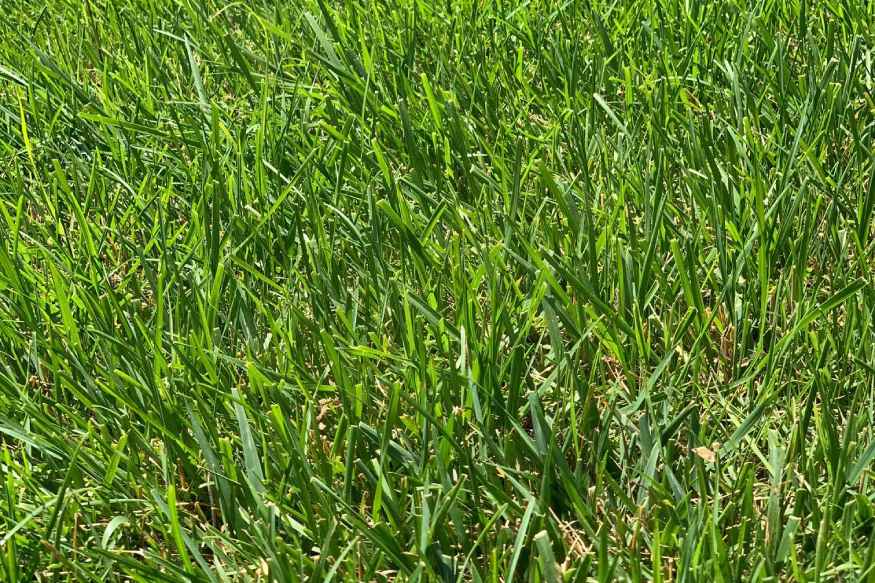
| Also Known As | Lolium arundinaceum (formerly Festuca arundinacea) |
| Type of Grass | Cool season perennial |
| Optimal Zones | Northern through transition zones |
| Root Structure | Deep |
| Winter hardiness | Excellent |
| Shade tolerance | High |
| Water Requirements | Medium to High |
| Drought Tolerance | Excellent |
| Self Repair Capacity | Limited |
| Overall Maintenance Requirements | Low |
Why Tall Fescue is a good choice for Utah
Turf-type tall fescue is an excellent cool-season grass for Utah lawns, especially if you are starting from scratch. This grass has a bunch-type growth pattern that doesn’t mix well with other turfgrass types, so it’s best not to over-seed an existing bluegrass lawn with tall fescue.
However, if you are planting a new lawn, tall fescue is a good choice because it’s drought-resistant, disease-resistant, and insect-resistant. It also has deeper roots and is more tolerant of foot traffic than bluegrass. While it can be coarser than bluegrass, newer turf-type varieties have been developed to have a softer texture that is similar to Kentucky bluegrass.
If you do choose tall fescue, you will need to start with soil that is free from other grasses before planting. It is also important to note that tall fescue grows in bunches, so you will need to over-seed regularly to prevent patchiness.
While not readily available at sod farms, tall fescue can be grown from seed. It’s a good general purpose turfgrass for Utah and has greater heat tolerance and can tolerate more shade than Kentucky bluegrass. Additionally, it requires somewhat less irrigation than bluegrass.
Tall fescue lawns are a durable and persistent plant that can be used for home lawns, grounds, parks, playgrounds, and athletic fields. It is less suited to heavily-shaded conditions than fine fescues but is more shade tolerant than Kentucky bluegrass and perennial ryegrass. It is best suited to well-drained soils.
Utah’s Climate and Growing Challenges for Lawns
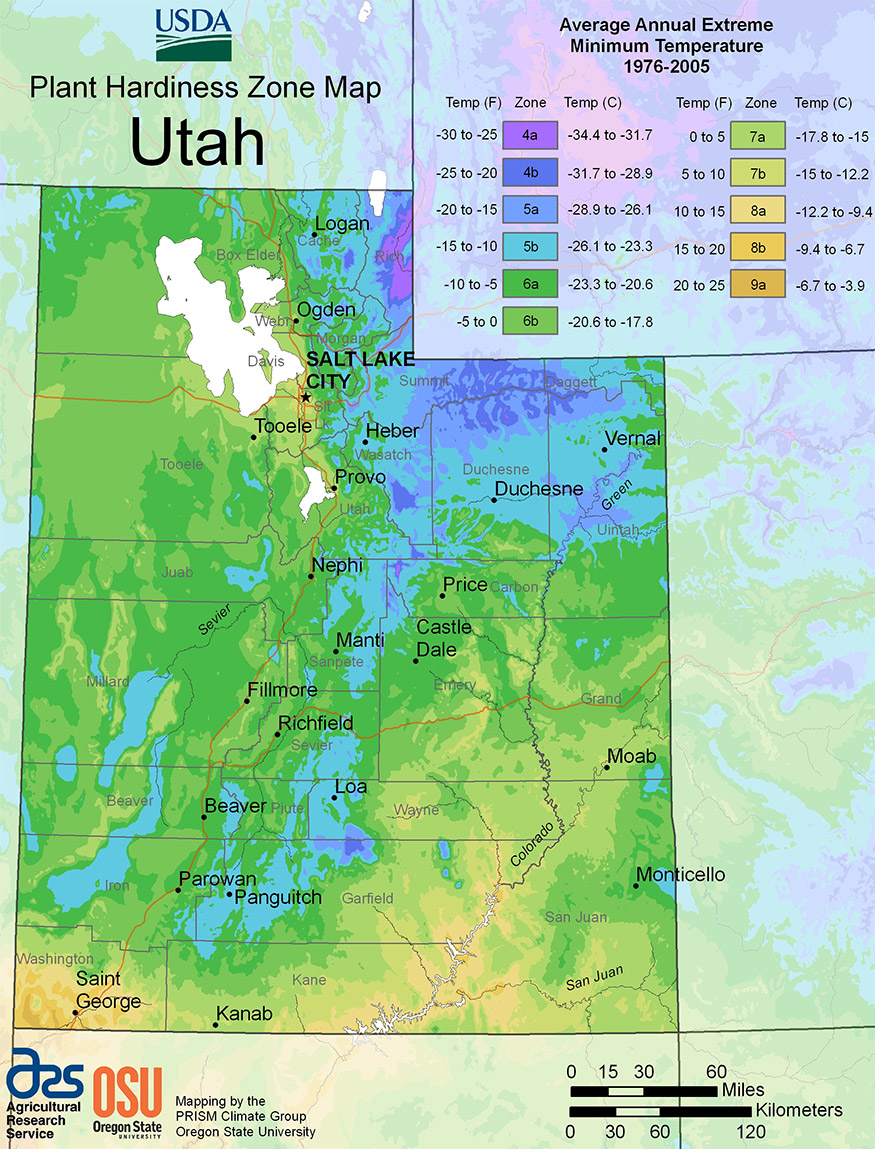
Utah’s climate is characterized by hot, dry summers and cold, snowy winters. These weather patterns can create challenges for growing lawns in the area.
Hot, Dry Summers
Utah’s hot, dry summers can make it difficult to maintain a healthy lawn. During the summer months, temperatures can reach over 100°F, and the state receives very little precipitation. This can cause lawns to become parched and brown, and can even kill off entire sections of grass.
Poor Soil Conditions
Utah’s soil is known for being alkaline and high in mineral content, which can make it difficult for grass to grow. The soil can also be compacted and lacking in organic matter, which can make it difficult for grass to establish healthy roots.
High Altitude
Utah’s high altitude can also pose a challenge for growing lawns. The air is thinner at higher altitudes, which can make it more difficult for grass to absorb nutrients and water.
Drought
Drought is a significant issue in Utah and can make it challenging to maintain a healthy lawn. It’s important to choose a grass type that is drought tolerant and can survive with minimal watering.
Invasive Species
Invasive species such as bindweed and quackgrass can also pose a challenge for growing lawns in Utah. These plants can quickly take over a lawn and compete with grass for nutrients and water.
Overall, growing a healthy lawn in Utah requires careful consideration of the weather, soil conditions, and other challenges.
Choosing a grass type that is well-suited to the local climate and soil, and taking steps to maintain healthy soil and watering practices, can help homeowners overcome these challenges and achieve a beautiful, lush lawn.